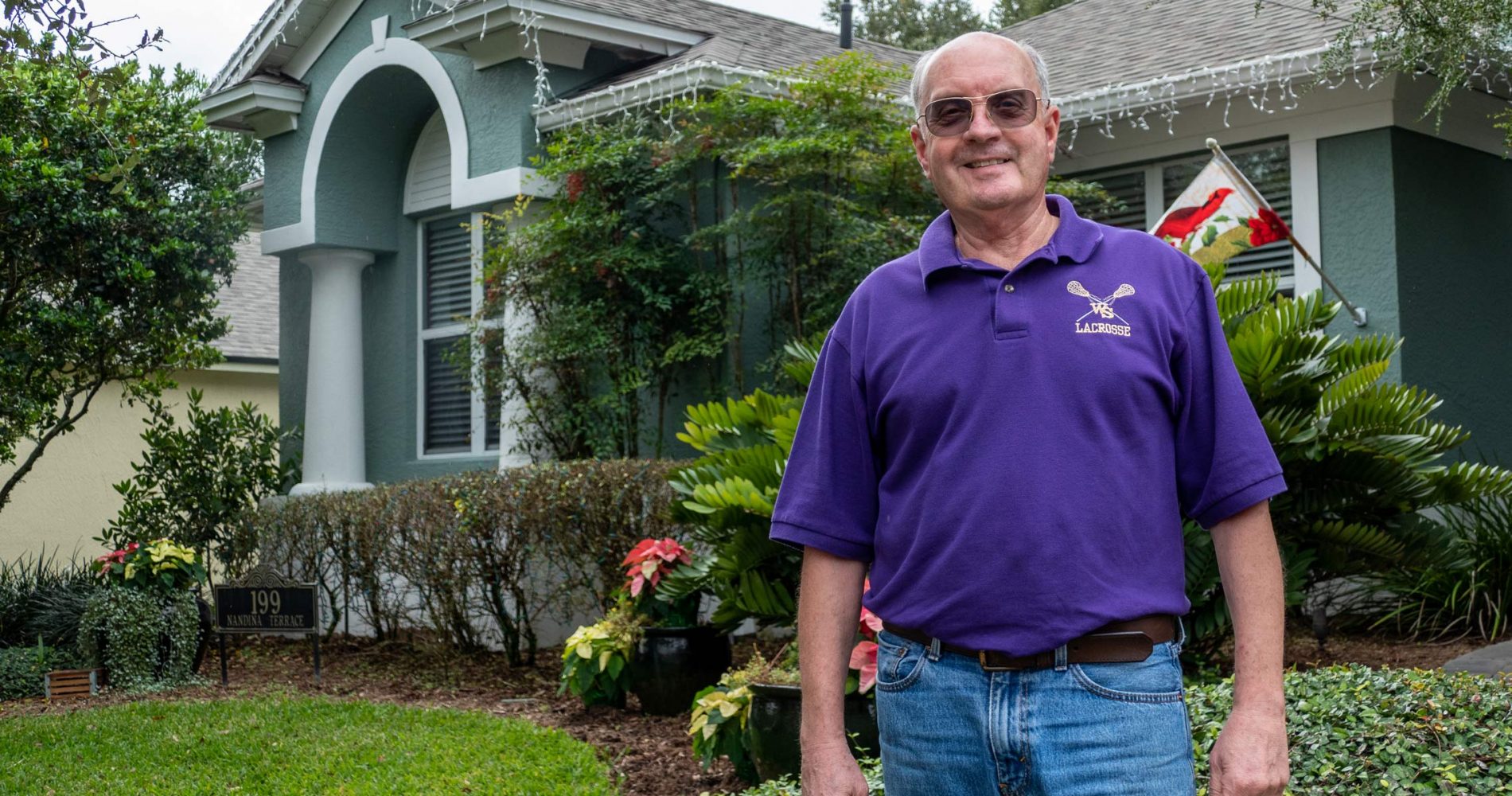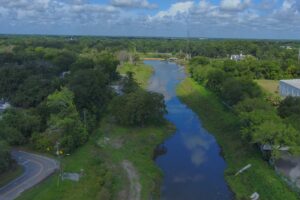H2O Heroes
One man’s story

Art Gallo speaks with district Water Conservation Coordinator Deirdre Irwin about a water-saving project he is undertaking, showing her his weather-based controllers.
Meet Art Gallo, a Winter Springs resident whose home irrigation system is serving as a pilot project that, in the future, could help other homeowners throughout the city cut back on outdoor water use.
Gallo, a retired U.S. Navy helicopter pilot, saw a television segment about a high-tech lawn watering system controller and decided to learn more about how he could improve his water savings.
“The TV segment got me started looking into things,” Gallo says. “I began researching the rules about landscape irrigation and called the St. Johns River Water Management District.”
Gallo got in touch with district Water Conservation Coordinator Deirdre Irwin, who was impressed by Gallo’s curiosity and his tenacity. She shared information with him about “smart” lawn-watering systems.
It was obvious that he had really done his homework.
“I never expected to hear from Art again but the next thing I know, I received a draft PowerPoint presentation from him,” Irwin recalls. “It was obvious that he had really done his homework.”
“Once I grab onto something, I won’t let go,” Gallo says. “What’s surprising to learn is how many gallons of water you’re actually pouring on your lawn.”
The controllers Gallo champions are weather-based and Wi-Fi enabled, which means they can be operated from a computer or cell phone. Weather-based controllers monitor changing weather conditions to prevent unnecessary watering and adjust a watering schedule to meet the needs of the plant or soil. With half of all water used in an average household going to outdoor irrigation, this technology can have a significant impact on water conservation.
As a regulatory agency, the district requires all permit holders to use water as efficiently as possible. For example, water supply utilities are required to implement conservation rate structures, perform water audits to ensure system efficiency and develop programs for the use of reclaimed water.
Permitting requirements for water conservation also ensure industry, agriculture and recreational users, such as golf courses, are combining efficient uses of water with best management practices. The district also offers cost-share funding to local governments and agricultural interests seeking to reduce the volume of water used in their operations and for their customers.
Perhaps the most challenging aspect of water conservation is the art of raising the public’s awareness about the need to conserve this limited resource. Not everyone has the time nor inclination to learn how to change their water use habits in the manner of Deborah Weaver. Additionally, there is a general misunderstanding about the volume of water used in a household and particularly the volume used to irrigate the landscape.
Nearly 900 people move to the Sunshine State every day. Annually, that’s more than 300,000 water users who are likely unfamiliar with the district’s water conservation rules or the demand on Florida’s groundwater supplies. This scenario necessitates the state’s water management districts to tirelessly promote water conservation year-round through watering restrictions, permitting programs, and through outreach/education initiatives such as magazine articles, social media, participation at water festivals and public speaking engagements. The district also sponsors seasonal campaigns, for example “Skip a Week,” which urges homeowners to skip every other week of irrigation during the winter months when lawns are dormant. Online, the district offers information on waterwise landscaping and tips for saving water inside and outside the home. Water conservation is commonly considered the cheapest way to delay the need for a utility to invest in costly alternative sources.





